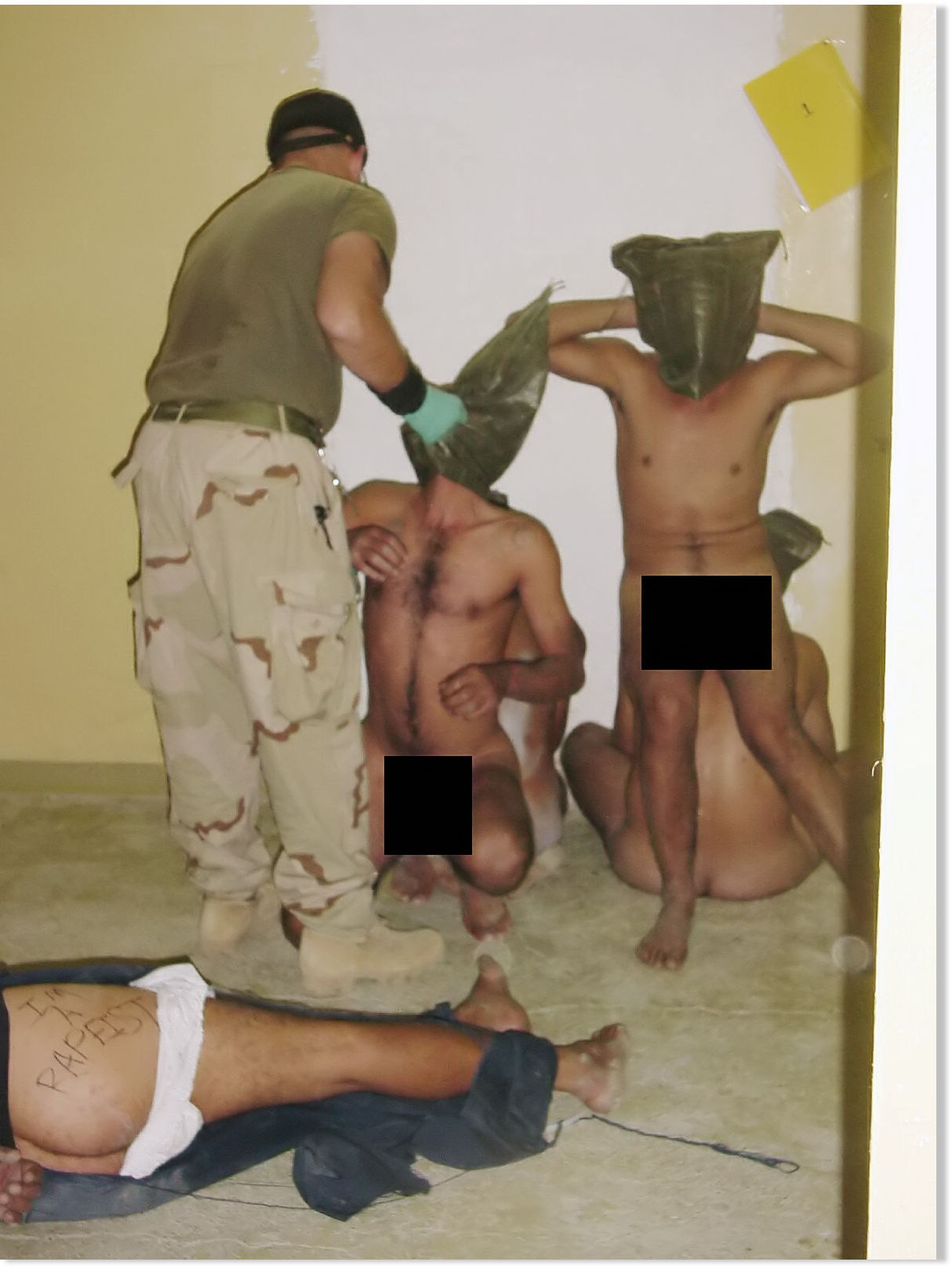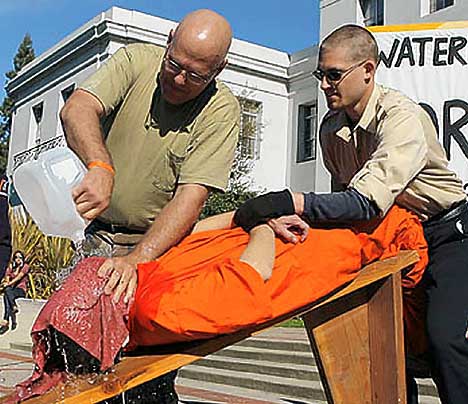What is Torture?
 |
| Figure 1: President Obama here to take you through the history! |
Have you ever experienced something that was physically
painful to you? Something that made you go
ouch, or even something that made you want to sit down and just
cry? Can you imagine however a pain so deep and severe that it made you
confess all your deepest darkest secrets? This is the pain that most torture victims experience when being
interrogated or questioned for an offense that had broken the law. However you could see that this isn't always the right or moral way to get someone to spill their darkest secrets. Many citizens of the United States of American such as yourselves have questioned the rights we have as citizens of this country,
human respect, the treatment of prisoners, and the ethics of such torture events that are used when questioning a suspect. Good news for you, one of the biggest people to impact this very important topic is here to guide you through the history and the new reform of torture. You might know him as our forty fourth president of the United States, President Barack Obama! (Figure 1).
Earliest Forms of Torture
 |
| Figure 2: Prisoners are stripped and beaten. |
Torture has been around for many years dating back to medieval times in which involved a time period of the kings and knights. However more recently the use of torture shot off when the pictures of the prisoners in
Abu Ghriab were reveled to the public in 2004. Abu Ghriab was one of the most famous terrorists , Saddam Hussein's, prison taken over by the United States. These findings shocked the world. Most citizens described the acts cruel and vary
graphic, something you could imagine as a rated R movie being. Some citizens even compared it as extreme forms of bullying such as someone very big and powerful picking on someone small and weak in school on the play ground. Some prisoners were forced to get naked and got
beaten in front of other prisoners as a form of embarrassment as can be scene in (figure 2). Some citizens thought that this was a necessary stating it was for the greater good and shrugged off the pictures while others were completely torn apart.
Torture Method
 |
| Figure 3: A simulation of water boarding. |
One of the most controversial method of torture is the use of
water boarding as seen in (figure 3).Water boarding is "an interrogation technique stimulating the experience of
drowning, in which a person is strapped, face up, to a board that slopes downward at the head, while large quantities of water are poured over the face into the breathing passages" (1). You could imagine this by being taken under by a wave at the beach while water rushes down and up your nose making it
impossible to breathe, coming up for air but immediately being taken down by another one. Many victims of this method of torture eventually gave up anything the interrogator wanted to know. This lead to many convictions however tested the factor of human rights. Drowning can be one the worst ways to die because it is slow and you feel your
life slowly fading away. It took most water boarding sessions for prisoners to give up information. Eventually the stress and pain was too great to keep there secrets inside any longer and they finally gave in.
Life in Prisons While Waiting Interrogation
 |
| Figure 4: Example of the inside of an isolated prison cell. |
Methods were not just limited in the interrogation room. How prisoners were treated in their cells gave in to them cracking which many believe
violated human rights. Some prisoners were stripped naked and chained to a pole where the only blanket they had was a pile of hair in a nearby corner. Others were humiliated to other prisoners to the break of mental decomposition or a
mental breakdown. You could describe this as an extreme overload of stress and defeat once studying for hours for a really huge test in school. Your brain is fried and mentally you have nothing left. Some prisoners faced what is known as
housing or control units. Prisoners were taken and left there, without any contact making them feel as though they had been totally forgotten."Here, as Amnesty International reports, prisoners live in almost complete isolation in perpetually lit eight-by-ten foot rooms; they encounter no other human beings. Doors are opened and shut by remote control; meals appear through slots in cell doors." (2). These rooms could be described by picking out a small corner or a room in your bedroom and only being able to take about five maybe fix steps in any direction until you encountered a wall in which closed you in. See (figure 4). This was a
psychological form of torture once
incarcerated. Some prisoners spent years, even life sentences in isolation and still did not give up information. Being isolated caused many prisoners to lose their minds and become completely lost inside their heads. They start to not become human any more from the psychological damage that was inflicted while being stuck in these rooms for years.
The Change
George W. Bush agreed with the torturing method. "Professionalism and skill of our interrogators were not part of the priority for the
Bush Administration." (3). Bush agreed to create brutal methods for interrogations, well this
WILL not stand with me! I issued an executive order stating that "in all circumstances
no one shall be subjected to torture, cruel treatment, outrages upon personal dignity, humiliating treatment, or degrading treatment at any time and in any place whatsoever." (4). People will constantly change there minds on what is right and wrong in the terms of torture kids and no one will ever be completely settled. However, my job is to keep it the peace and the most humane law in order. I hope you took away good knowledge from this history lesson kids but I have to go back to business in the White House now. I will see all of you later!
References:
(1) Gregory, A.G. (2012). Understanding
the U.S. torture state. Independent Review, 17, 291-296. Retrieved from http://ehis.ebscohost.com/eds/pdfviewer/pdfviewer?sid=cedcc8a4-814d-48a6-8f5d-179e143de091%40sessionmgr115&vid=23&hid=119
(2) Gordon, R.G. (2006). Torture comes
out of the closet. Peace Review, 18, 447-454. doi:10.1080/10402650601030302.
(3) Coulam, R.C. (2013). Skills versus
brutality in interrogation: lessons from Israel for American policy.
Intelligence & National Security, 28, 566-590. Retrieved from http://ehis.ebscohost.com/eds/pdfviewer/pdfviewer?sid=cedcc8a4-814d-48a6-8f5d-179e143de091%40sessionmgr115&vid=11&hid=119
(4)
Paust, J.P. (2010). Ending the U.S.
program for torture and impunity: president Obama’s first steps and path
forward. Tulane Journal of International & Comparative Law, 19, 151-172.
Retrieved from http://ehis.ebscohost.com/eds/pdfviewer/pdfviewer?sid=cedcc8a4-814d-48a6-8f5d-179e143de091%40sessionmgr115&vid=18&hid=119




No comments:
Post a Comment